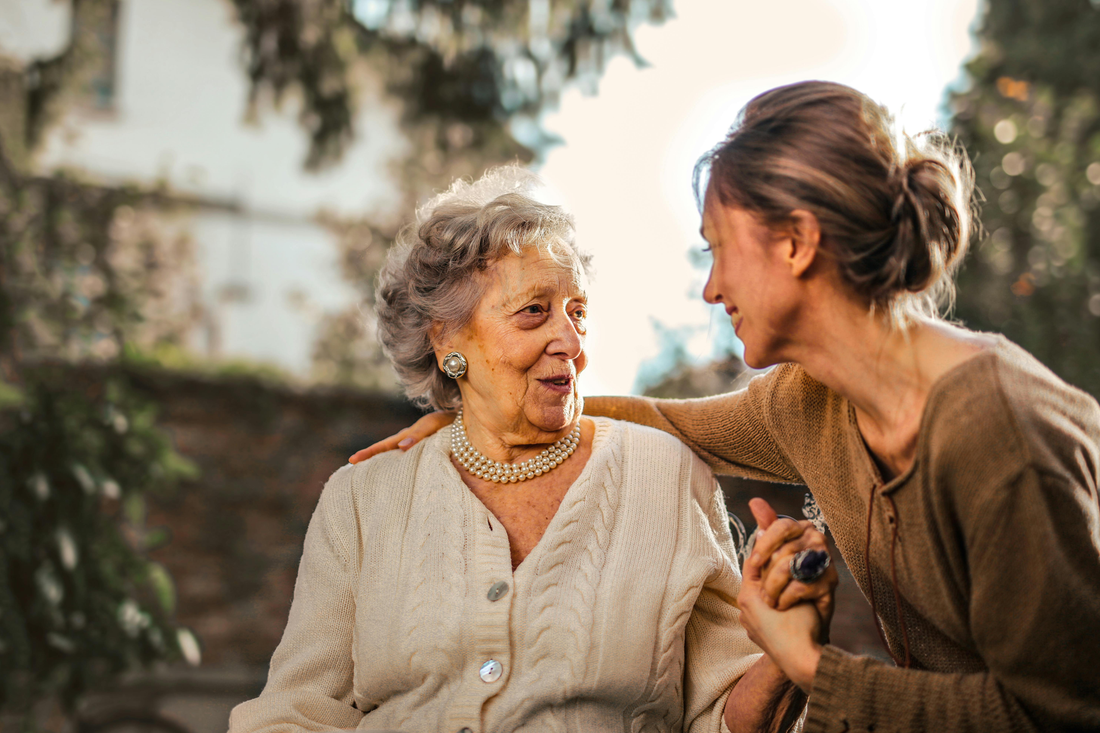New Caregiver Checklist: How to Support Aging Parents

Taking on the role of a caregiver for an aging loved one is both a profound responsibility and a deeply meaningful, emotional journey. While I am not a healthcare professional, I’ve experienced it myself and understand how overwhelming it can feel at first. This checklist is meant as a heartfelt starting point—a guide to help you navigate the early steps and the path ahead.
Rooted in personal experience and conversations with other new caregivers, it’s a flexible tool that can be tailored to your loved one’s unique needs—whether they’re living alone or with someone. Though I don’t have all the answers, I hope this makes you feel less alone, more prepared, and ready to take practical, meaningful steps in caring for someone you love.
Home Safety
As a caregiver, focusing on safety is essential. Often, simple, mindful actions can make a big difference. Take the time to see how your loved one moves through their home—this firsthand understanding is your best guide to spotting safety concerns and knowing where support can help. If you're not local, ask someone you trust to do a walk-through. Small steps like these help create a safer, more comfortable environment and strengthen your connection to their daily life.
-
Identify and remove trip hazards in and around the home (eg: curled rug edges, clutter, electrical cords)
-
Ensure a working flashlight and phone are easily accessible by the bed
-
Assess the need for grab bars or shower seats, and make sure any railings are secure
-
Install smoke and carbon monoxide detectors, and replace batteries regularly
-
Make sure all areas, especially stairways and bathrooms, are well-lit
-
Use non-slip mats in the bathroom and kitchen
-
Consider a medical alert system for emergencies
-
Regularly review household upkeep—pets, lightbulbs, expired foods, watering plants, etc
-
Arrange for occasional professional cleaning or volunteer to help with cleaning as a thoughtful gesture
-
Educate your loved one about online/email scams targeting older adults and ways to stay safe
Gather Key Documents
Having all essential documents organized and accessible is crucial. It helps you and your loved ones access important information quickly during emergencies and supports informed decision-making.
-
Organize all essential documents—passports, insurance policies, deeds—in one safe, easy-to-reach place, and keep them current
-
Check if your loved one needs a REAL ID or passport for domestic travel., as obtaining these documents may require additional documentation like proof of name changes from marriage or divorce. [Check your state’s local Department of Motor Vehicles (DMV) for specific requirements or learn more here]
-
Ensure legal documents such as health proxies, powers of attorney, and living wills/advance directives are in order or start the conversation with sensitivity and care
-
Add trusted family members to official forms to allow them to discuss health matters with doctors (HIPAA compliance)
-
Maintain a current list of contact information for doctors, family, and emergency services on your loved one’s mobile phone and by the home phone
-
Register your loved one on local evacuation and emergency assistance lists for support during crises
-
Make sure someone they trust is listed on bank accounts and utility bills, so they can handle finances if needed
Family & Care Plan
Having open and honest conversations early on sets the stage for cooperation and reduces potential friction later. Understanding and planning for various scenarios—what’s most desirable, feasible, and affordable—helps everyone stay aligned.
-
Designate a main point person—someone who will coordinate communication and care efforts. While this often naturally falls to a nearby family member, it’s important to discuss and acknowledge that it’s a big responsibility, regardless of who might seem like the obvious one to step into it
-
Decide on a shared communication platform (e.g., group chat, email, Zoom) to keep everyone informed
-
Assess and share caregiving responsibilities based on each person’s strengths, location, and resources—whether for visits, calls, financial support, or research
-
Explore resources offered through your local council on aging, religious groups, and volunteer organizations—such as respite care, Meals on Wheels, transportation, and community activities
-
Research local Medicare and Medicaid services, including home health visits and helplines for non-emergency calls
-
Discuss and plan for a range of scenarios, including emergency and long-term care options
Medication Management
Managing medications carefully is vital for your loved one’s health and safety. Good oversight helps prevent errors, ensures they take the right medicines at the right times, and keeps you and their healthcare team informed about their overall treatment.
-
Create a complete, up-to-date list of all medications, including names, doses, frequency, and purpose
-
Share this list with family via a shared document (like Google Docs) for easy access and updates
-
Write down medication details clearly on a card or note and keep it near their medications
-
If your loved one is comfortable with technology, set alarms or reminders for medication times
-
Consider using a medication organizer or pillbox to help keep track of daily doses, especially if they’re taking multiple medicines
-
For loved ones with increasing memory or physical challenges, make sure someone is available to help them take medications correctly and on time
Regular Check-ins
As a caregiver, meaningful communication is incredibly important for the emotional well-being of older adults, whether they are aging in place or living with others. Regular, thoughtful interactions can brighten their days and reinforce their support network. With options like phone calls, video chats, handwritten letters, and home deliveries, there are many ways to stay connected and show you care.
-
Involve all family members in sharing responsibility for maintaining contact through regular calls or video chats
-
Ensure Internet and tablets or computers are working, and check them regularly for any necessary updates
-
Send personal mail—letters, cards, and postcards—to create moments of joy in their week
-
Provide technology that accommodates specific needs, such as hearing-impaired phones, and ensure closed captions are enabled on TVs needs
-
Arrange for deliveries of favorite treats or essentials through home delivery services
Nutrition and Meals
Good nutrition and hydration are essential for maintaining strength, energy, and overall health as we age. Many older adults don’t realize how little they’re drinking or eating enough, which can lead to dehydration, weakness, and other health issues. Your attentive, small actions can make a big difference—encouraging healthy habits, ensuring they stay hydrated, and making mealtimes pleasant and accessible.
-
Whenever possible, go grocery shopping together or provide transportation to make it an enjoyable outing
-
If in-person shopping isn’t feasible, work with your loved one to create a shopping list for online orders or curbside pickup
-
Keep an eye on kitchen safety–check for expired food and safe cooking practices
-
Encourage regular hydration by offering their favorite cup or mug with a reusable straw to make drinking easier
-
Stock the freezer with homemade portions or healthy frozen meals that are easy to heat and serve on days they are too tired to prepare meals
-
Make nutritious snacks easily accessible, and be mindful of allergies or dietary restrictions
-
Help with meal planning and preparation to suit their preferences and needs, making food more inviting
-
Be attentive to any difficulty with chewing or swallowing, and provide softer, easy-to-eat foods if necessary
-
Encourage a balanced diet rich in fruits, vegetables, whole grains, and protein, even in small portions
-
Create a pleasant mealtime experience—set the table and eat together if possible

